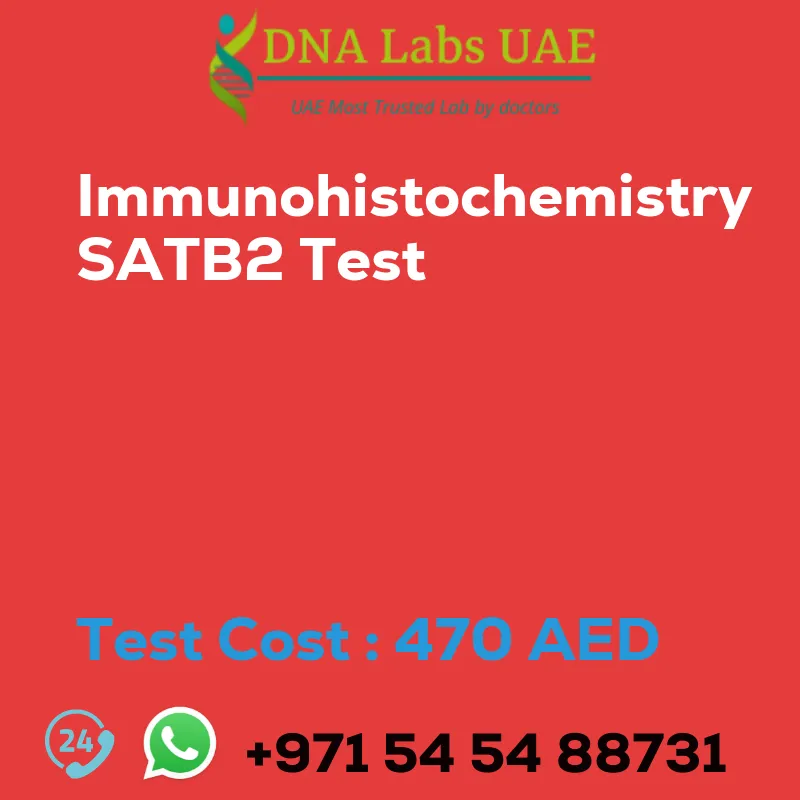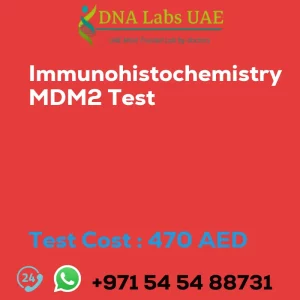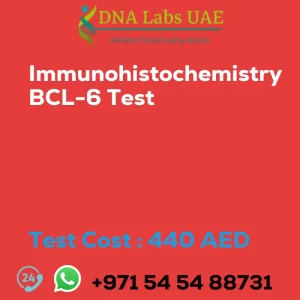IMMUNOHISTOCHEMISTRY SATB2 Test
Components: Price – 470.0 AED
Sample Condition: Submit tumor tissue in 10% Formal-saline OR Formalin fixed paraffin embedded block. Ship at room temperature. Provide a copy of the Histopathology report, Site of biopsy and Clinical history.
Report Delivery: Sample Daily by 6 pm; Report Block: 5 days Tissue Biopsy: 5 days Tissue large complex: 7 days
Method: Immunohistochemistry
Test type: Cancer
Doctor: Oncologist, Pathologist
Test Department: HISTOLOGY
Pre Test Information: Provide a copy of the Histopathology report, Site of biopsy and Clinical history.
Test Details
The SATB2 test is an immunohistochemistry (IHC) test used to detect the expression of the SATB2 protein in tissue samples. SATB2 (Special AT-rich sequence-binding protein 2) is a transcription factor that plays a crucial role in the development of the central nervous system and skeletal system.
The SATB2 test is primarily used in diagnostic pathology to determine the origin of certain tumors, especially those arising in the gastrointestinal tract and lower urinary tract. It can help differentiate between primary colorectal cancer and metastatic tumors from other sites.
The SATB2 protein is normally expressed in the nuclei of neurons in the brain, as well as in osteoblasts and osteocytes in bone tissue. However, it is not typically expressed in normal epithelial cells of the gastrointestinal tract. Therefore, the presence of SATB2 protein in a tumor sample suggests a colorectal origin.
To perform the SATB2 test, a tissue sample (usually obtained through biopsy or surgery) is fixed, embedded in paraffin, and sectioned onto glass slides. The sections are then subjected to a series of steps, including deparaffinization, antigen retrieval, blocking, primary antibody incubation, secondary antibody incubation, and visualization.
The primary antibody used in the SATB2 test specifically binds to the SATB2 protein. After the primary antibody binds to the target protein in the tissue sample, a secondary antibody is applied, which is conjugated to a chromogen or fluorophore. This allows for the visualization of the SATB2 protein expression under a microscope.
The SATB2 test results are interpreted by a pathologist, who examines the stained tissue sections for the presence or absence of SATB2 protein expression. The pathologist will assess the intensity and distribution of staining to determine the diagnostic significance.
In summary, the SATB2 test is an immunohistochemistry test used to detect the expression of the SATB2 protein in tissue samples. It is primarily used to differentiate between primary colorectal cancer and metastatic tumors from other sites.
| Test Name | IMMUNOHISTOCHEMISTRY SATB2 Test |
|---|---|
| Components | |
| Price | 470.0 AED |
| Sample Condition | Submit tumor tissue in 10% Formal-saline OR Formalin fixed paraffin embedded block. Ship at room temperature. Provide a copy of the Histopathology report, Site of biopsy and Clinical history. |
| Report Delivery | Sample Daily by 6 pm; Report Block: 5 days Tissue Biopsy: 5 days Tissue large complex : 7 days |
| Method | Imunohistochemistry |
| Test type | Cancer |
| Doctor | Oncologist, Pathologist |
| Test Department: | HISTOLOGY |
| Pre Test Information | Provide a copy of the Histopathology report, Site of biopsy and Clinical history. |
| Test Details |
The SATB2 test is an immunohistochemistry (IHC) test used to detect the expression of the SATB2 protein in tissue samples. SATB2 (Special AT-rich sequence-binding protein 2) is a transcription factor that plays a crucial role in the development of the central nervous system and skeletal system. The SATB2 test is primarily used in diagnostic pathology to determine the origin of certain tumors, especially those arising in the gastrointestinal tract and lower urinary tract. It can help differentiate between primary colorectal cancer and metastatic tumors from other sites. The SATB2 protein is normally expressed in the nuclei of neurons in the brain, as well as in osteoblasts and osteocytes in bone tissue. However, it is not typically expressed in normal epithelial cells of the gastrointestinal tract. Therefore, the presence of SATB2 protein in a tumor sample suggests a colorectal origin. To perform the SATB2 test, a tissue sample (usually obtained through biopsy or surgery) is fixed, embedded in paraffin, and sectioned onto glass slides. The sections are then subjected to a series of steps, including deparaffinization, antigen retrieval, blocking, primary antibody incubation, secondary antibody incubation, and visualization. The primary antibody used in the SATB2 test specifically binds to the SATB2 protein. After the primary antibody binds to the target protein in the tissue sample, a secondary antibody is applied, which is conjugated to a chromogen or fluorophore. This allows for the visualization of the SATB2 protein expression under a microscope. The SATB2 test results are interpreted by a pathologist, who examines the stained tissue sections for the presence or absence of SATB2 protein expression. The pathologist will assess the intensity and distribution of staining to determine the diagnostic significance. In summary, the SATB2 test is an immunohistochemistry test used to detect the expression of the SATB2 protein in tissue samples. It is primarily used to differentiate between primary colorectal cancer and metastatic tumors from other sites. |







